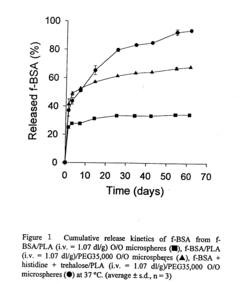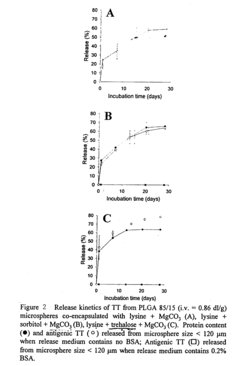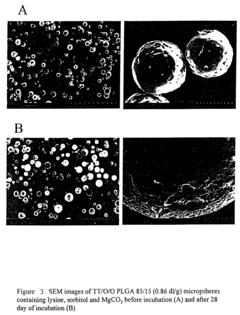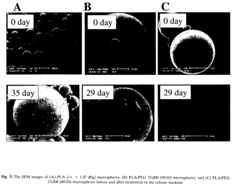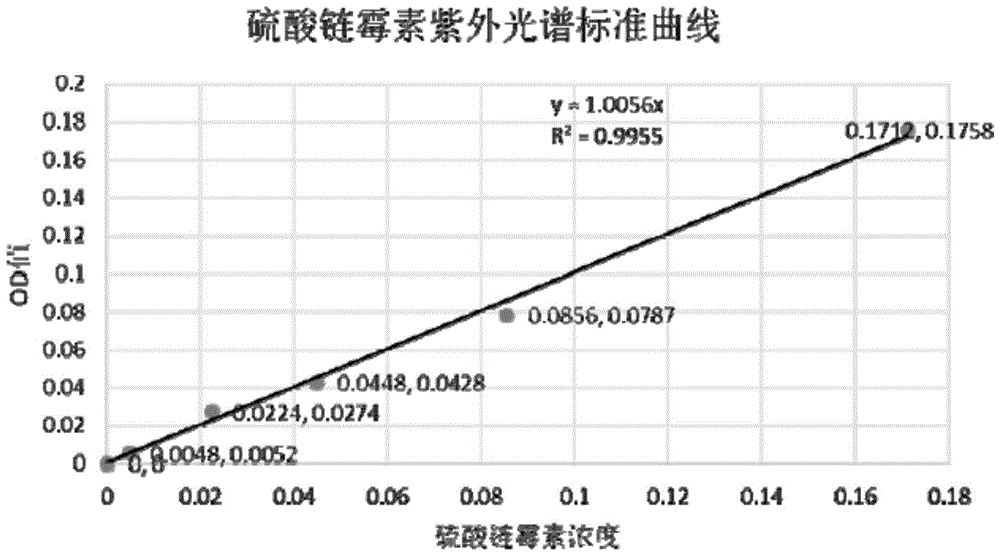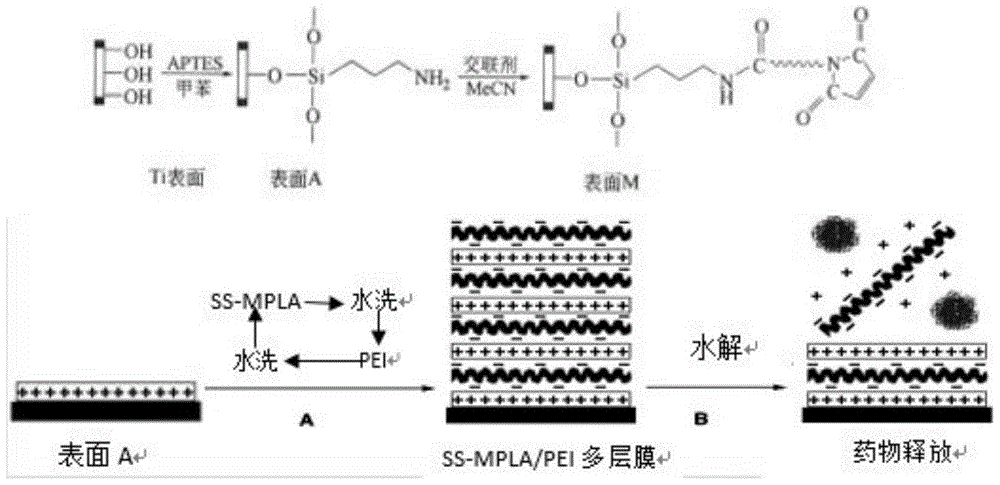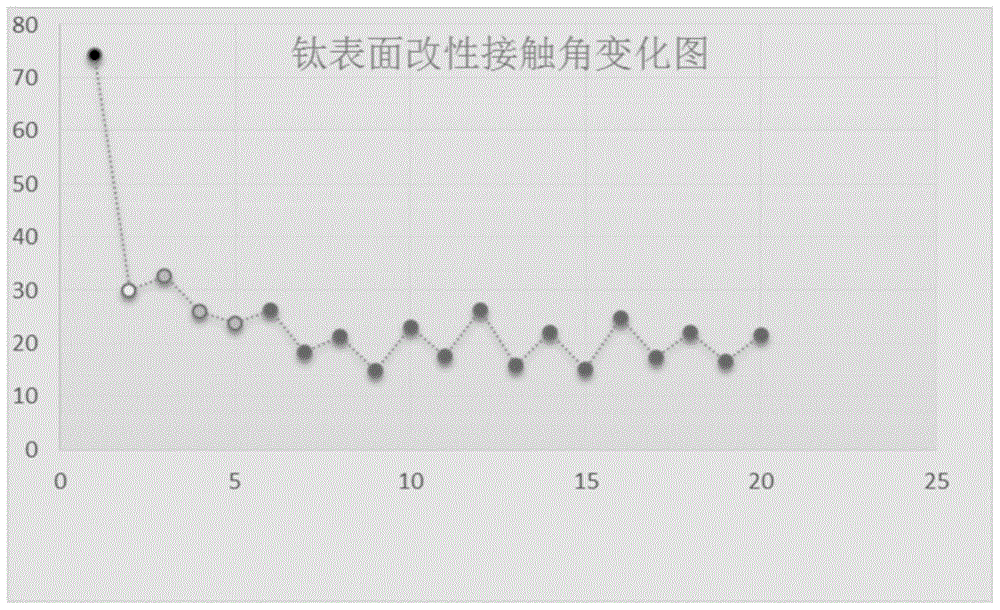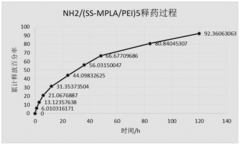How to Develop Regulatory Frameworks Supporting PLA?
JUN 25, 20259 MIN READ
Generate Your Research Report Instantly with AI Agent
Patsnap Eureka helps you evaluate technical feasibility & market potential.
PLA Regulatory Background and Objectives
Polylactic acid (PLA) has emerged as a promising biodegradable polymer with potential to address environmental concerns associated with conventional plastics. The development of regulatory frameworks supporting PLA is crucial for its widespread adoption and sustainable use. This process involves a comprehensive examination of the technology's evolution, current trends, and future objectives.
The history of PLA dates back to the 1930s when it was first synthesized by Wallace Carothers. However, it wasn't until the late 20th century that PLA gained significant attention as a biodegradable alternative to petroleum-based plastics. The growing awareness of environmental issues and the need for sustainable materials have driven the development and refinement of PLA technology over the past few decades.
Recent technological advancements have focused on improving PLA's properties, such as thermal stability, mechanical strength, and processability. These developments have expanded PLA's potential applications across various industries, including packaging, textiles, and medical devices. The increasing demand for eco-friendly materials has further accelerated research and development efforts in the PLA sector.
The primary objective of developing regulatory frameworks for PLA is to ensure its safe and sustainable use while promoting its adoption as an alternative to conventional plastics. These frameworks aim to address key aspects such as production standards, quality control, biodegradability assessment, and end-of-life management. By establishing clear guidelines and regulations, policymakers seek to create a supportive environment for PLA manufacturers, users, and waste management facilities.
One of the critical challenges in developing regulatory frameworks for PLA is the need to harmonize standards across different regions and industries. This requires collaboration between governments, industry stakeholders, and research institutions to establish consistent criteria for PLA production, use, and disposal. Additionally, regulatory frameworks must be flexible enough to accommodate ongoing technological advancements in PLA production and applications.
The evolution of PLA technology is closely linked to broader sustainability goals, including reducing carbon emissions, minimizing waste, and promoting circular economy principles. As such, regulatory frameworks supporting PLA must align with these overarching environmental objectives while also considering economic feasibility and market dynamics.
Looking ahead, the development of regulatory frameworks for PLA is expected to focus on several key areas. These include standardizing biodegradability testing methods, establishing clear labeling requirements, and creating incentives for PLA adoption in various industries. Furthermore, regulations will likely address the entire lifecycle of PLA products, from raw material sourcing to end-of-life management, to ensure a holistic approach to sustainability.
The history of PLA dates back to the 1930s when it was first synthesized by Wallace Carothers. However, it wasn't until the late 20th century that PLA gained significant attention as a biodegradable alternative to petroleum-based plastics. The growing awareness of environmental issues and the need for sustainable materials have driven the development and refinement of PLA technology over the past few decades.
Recent technological advancements have focused on improving PLA's properties, such as thermal stability, mechanical strength, and processability. These developments have expanded PLA's potential applications across various industries, including packaging, textiles, and medical devices. The increasing demand for eco-friendly materials has further accelerated research and development efforts in the PLA sector.
The primary objective of developing regulatory frameworks for PLA is to ensure its safe and sustainable use while promoting its adoption as an alternative to conventional plastics. These frameworks aim to address key aspects such as production standards, quality control, biodegradability assessment, and end-of-life management. By establishing clear guidelines and regulations, policymakers seek to create a supportive environment for PLA manufacturers, users, and waste management facilities.
One of the critical challenges in developing regulatory frameworks for PLA is the need to harmonize standards across different regions and industries. This requires collaboration between governments, industry stakeholders, and research institutions to establish consistent criteria for PLA production, use, and disposal. Additionally, regulatory frameworks must be flexible enough to accommodate ongoing technological advancements in PLA production and applications.
The evolution of PLA technology is closely linked to broader sustainability goals, including reducing carbon emissions, minimizing waste, and promoting circular economy principles. As such, regulatory frameworks supporting PLA must align with these overarching environmental objectives while also considering economic feasibility and market dynamics.
Looking ahead, the development of regulatory frameworks for PLA is expected to focus on several key areas. These include standardizing biodegradability testing methods, establishing clear labeling requirements, and creating incentives for PLA adoption in various industries. Furthermore, regulations will likely address the entire lifecycle of PLA products, from raw material sourcing to end-of-life management, to ensure a holistic approach to sustainability.
Market Demand Analysis for PLA Regulations
The market demand for regulatory frameworks supporting Polylactic Acid (PLA) has been steadily increasing in recent years, driven by growing environmental concerns and the shift towards sustainable materials. PLA, a biodegradable and renewable polymer derived from plant-based sources, has gained significant attention in various industries, particularly packaging, textiles, and medical applications.
The global PLA market is experiencing robust growth, with projections indicating continued expansion in the coming years. This growth is primarily fueled by increasing consumer awareness of environmental issues and a growing preference for eco-friendly products. As a result, there is a pressing need for comprehensive regulatory frameworks to support the development, production, and use of PLA across different sectors.
One of the key drivers for regulatory demand is the need to establish clear standards for PLA production and quality control. As more manufacturers enter the PLA market, there is a growing concern about maintaining consistent product quality and performance. Regulatory frameworks can help address these concerns by setting industry-wide standards and certification processes, ensuring that PLA products meet specific criteria for biodegradability, mechanical properties, and safety.
Another significant factor contributing to the market demand for PLA regulations is the need for clear guidelines on waste management and disposal. As PLA products become more prevalent in the market, there is an increasing need for proper disposal and recycling infrastructure. Regulatory frameworks can play a crucial role in establishing guidelines for the collection, sorting, and processing of PLA waste, ensuring that the material's environmental benefits are fully realized.
The medical and pharmaceutical industries have also shown a growing interest in PLA, particularly for applications such as drug delivery systems and bioabsorbable implants. This has created a demand for regulatory frameworks that address the specific requirements and safety standards for PLA in medical applications. Such regulations would help facilitate the adoption of PLA in these high-value sectors while ensuring patient safety and product efficacy.
Furthermore, there is a rising demand for regulations that promote the use of PLA in packaging applications. With many countries implementing bans or restrictions on single-use plastics, there is an opportunity for PLA to serve as a sustainable alternative. However, clear regulatory guidelines are needed to ensure that PLA packaging meets performance standards, food safety requirements, and end-of-life management criteria.
The market demand for PLA regulations also extends to the agricultural sector, where there is growing interest in using PLA for applications such as mulch films and seed coatings. Regulatory frameworks can help establish guidelines for the use of PLA in agriculture, addressing concerns related to soil health, biodegradation rates, and potential environmental impacts.
The global PLA market is experiencing robust growth, with projections indicating continued expansion in the coming years. This growth is primarily fueled by increasing consumer awareness of environmental issues and a growing preference for eco-friendly products. As a result, there is a pressing need for comprehensive regulatory frameworks to support the development, production, and use of PLA across different sectors.
One of the key drivers for regulatory demand is the need to establish clear standards for PLA production and quality control. As more manufacturers enter the PLA market, there is a growing concern about maintaining consistent product quality and performance. Regulatory frameworks can help address these concerns by setting industry-wide standards and certification processes, ensuring that PLA products meet specific criteria for biodegradability, mechanical properties, and safety.
Another significant factor contributing to the market demand for PLA regulations is the need for clear guidelines on waste management and disposal. As PLA products become more prevalent in the market, there is an increasing need for proper disposal and recycling infrastructure. Regulatory frameworks can play a crucial role in establishing guidelines for the collection, sorting, and processing of PLA waste, ensuring that the material's environmental benefits are fully realized.
The medical and pharmaceutical industries have also shown a growing interest in PLA, particularly for applications such as drug delivery systems and bioabsorbable implants. This has created a demand for regulatory frameworks that address the specific requirements and safety standards for PLA in medical applications. Such regulations would help facilitate the adoption of PLA in these high-value sectors while ensuring patient safety and product efficacy.
Furthermore, there is a rising demand for regulations that promote the use of PLA in packaging applications. With many countries implementing bans or restrictions on single-use plastics, there is an opportunity for PLA to serve as a sustainable alternative. However, clear regulatory guidelines are needed to ensure that PLA packaging meets performance standards, food safety requirements, and end-of-life management criteria.
The market demand for PLA regulations also extends to the agricultural sector, where there is growing interest in using PLA for applications such as mulch films and seed coatings. Regulatory frameworks can help establish guidelines for the use of PLA in agriculture, addressing concerns related to soil health, biodegradation rates, and potential environmental impacts.
Current Regulatory Landscape and Challenges
The current regulatory landscape for Programmable Logic Arrays (PLAs) is characterized by a complex interplay of technological advancements and regulatory frameworks that struggle to keep pace. As PLAs continue to evolve and find applications in various industries, regulatory bodies face significant challenges in developing comprehensive and adaptable guidelines.
One of the primary challenges is the rapid pace of technological innovation in the field of PLAs. Regulatory frameworks often lag behind the latest developments, creating a gap between existing regulations and the current state of technology. This discrepancy can lead to uncertainty for manufacturers, developers, and end-users, potentially hindering innovation and market growth.
Another significant challenge is the diverse range of applications for PLAs across different sectors, including telecommunications, automotive, aerospace, and consumer electronics. Each industry has its own specific requirements and safety considerations, making it difficult to create a one-size-fits-all regulatory approach. Regulators must balance the need for industry-specific guidelines with the desire for a cohesive overall framework.
The global nature of PLA development and deployment adds another layer of complexity to the regulatory landscape. Different countries and regions have varying approaches to technology regulation, creating potential conflicts and inconsistencies in international standards. This lack of harmonization can lead to market fragmentation and increased compliance costs for companies operating in multiple jurisdictions.
Data privacy and security concerns also pose significant challenges in PLA regulation. As PLAs become more sophisticated and integrated into critical systems, the potential for data breaches and malicious exploitation increases. Regulators must address these risks while ensuring that security measures do not unduly restrict innovation or functionality.
The issue of intellectual property rights and patent protection in PLA development is another area of regulatory concern. Striking a balance between protecting innovation and fostering open collaboration is crucial for the continued advancement of PLA technology.
Environmental considerations, including energy efficiency and e-waste management, are becoming increasingly important in PLA regulation. Developing frameworks that promote sustainable practices throughout the lifecycle of PLA products is a growing challenge for regulatory bodies.
Lastly, the interdisciplinary nature of PLA technology, which combines elements of hardware and software engineering, creates challenges in defining regulatory boundaries and responsibilities. Determining which aspects fall under hardware regulations versus software regulations, and how to address the integration of these components, remains a complex issue for regulators to navigate.
One of the primary challenges is the rapid pace of technological innovation in the field of PLAs. Regulatory frameworks often lag behind the latest developments, creating a gap between existing regulations and the current state of technology. This discrepancy can lead to uncertainty for manufacturers, developers, and end-users, potentially hindering innovation and market growth.
Another significant challenge is the diverse range of applications for PLAs across different sectors, including telecommunications, automotive, aerospace, and consumer electronics. Each industry has its own specific requirements and safety considerations, making it difficult to create a one-size-fits-all regulatory approach. Regulators must balance the need for industry-specific guidelines with the desire for a cohesive overall framework.
The global nature of PLA development and deployment adds another layer of complexity to the regulatory landscape. Different countries and regions have varying approaches to technology regulation, creating potential conflicts and inconsistencies in international standards. This lack of harmonization can lead to market fragmentation and increased compliance costs for companies operating in multiple jurisdictions.
Data privacy and security concerns also pose significant challenges in PLA regulation. As PLAs become more sophisticated and integrated into critical systems, the potential for data breaches and malicious exploitation increases. Regulators must address these risks while ensuring that security measures do not unduly restrict innovation or functionality.
The issue of intellectual property rights and patent protection in PLA development is another area of regulatory concern. Striking a balance between protecting innovation and fostering open collaboration is crucial for the continued advancement of PLA technology.
Environmental considerations, including energy efficiency and e-waste management, are becoming increasingly important in PLA regulation. Developing frameworks that promote sustainable practices throughout the lifecycle of PLA products is a growing challenge for regulatory bodies.
Lastly, the interdisciplinary nature of PLA technology, which combines elements of hardware and software engineering, creates challenges in defining regulatory boundaries and responsibilities. Determining which aspects fall under hardware regulations versus software regulations, and how to address the integration of these components, remains a complex issue for regulators to navigate.
Existing Regulatory Approaches for PLA
01 Regulatory compliance management systems
Systems and methods for managing regulatory compliance across various industries. These systems often involve digital platforms that help organizations track, monitor, and ensure adherence to relevant regulations and standards. They may include features for risk assessment, document management, and reporting to facilitate compliance with complex regulatory frameworks.- Regulatory compliance management systems: Systems and methods for managing regulatory compliance across various industries. These systems often involve digital platforms that help organizations track, monitor, and ensure adherence to relevant regulations and standards. They may include features for risk assessment, documentation management, and reporting to facilitate compliance with complex regulatory frameworks.
- Pharmaceutical regulatory frameworks: Specific regulatory frameworks and processes related to the pharmaceutical industry. This includes systems for managing drug approvals, clinical trials, and quality control in accordance with regulatory requirements. These frameworks often involve specialized software and databases to handle the complex regulatory landscape of drug development and manufacturing.
- Environmental regulatory compliance: Systems and methods for ensuring compliance with environmental regulations. These may include tools for monitoring emissions, managing waste, and reporting environmental impact data to regulatory bodies. Such systems often integrate with industrial processes to provide real-time compliance monitoring and automated reporting capabilities.
- Financial regulatory technology: Technological solutions designed to address financial regulatory requirements. These systems may include tools for anti-money laundering (AML), know your customer (KYC) processes, and financial reporting in compliance with various national and international regulations. They often leverage advanced analytics and machine learning to detect and prevent regulatory violations.
- Regulatory data management and analysis: Advanced systems for collecting, storing, and analyzing regulatory data across multiple domains. These platforms often use big data technologies and artificial intelligence to process large volumes of regulatory information, identify trends, and provide insights for compliance strategies. They may also include features for generating regulatory reports and maintaining audit trails.
02 Pharmaceutical regulatory frameworks
Regulatory frameworks specific to the pharmaceutical industry, including systems for managing drug approvals, clinical trials, and quality control. These frameworks often involve complex processes for ensuring drug safety, efficacy, and compliance with international standards. They may also include mechanisms for pharmacovigilance and post-market surveillance.Expand Specific Solutions03 Environmental regulatory compliance
Systems and methods for ensuring compliance with environmental regulations and standards. These may include tools for monitoring emissions, managing waste, and reporting on environmental impact. Such frameworks often involve complex data collection and analysis to demonstrate adherence to local, national, and international environmental laws.Expand Specific Solutions04 Financial regulatory frameworks
Regulatory frameworks designed for the financial sector, including systems for ensuring compliance with banking regulations, anti-money laundering laws, and securities regulations. These frameworks often involve sophisticated risk management tools, transaction monitoring systems, and reporting mechanisms to meet the requirements of financial regulatory bodies.Expand Specific Solutions05 Data privacy and protection regulations
Frameworks and systems for ensuring compliance with data privacy laws and regulations, such as GDPR or CCPA. These may include tools for managing consent, data access requests, and data breach notifications. Such systems often involve complex data mapping and security measures to protect personal information and maintain regulatory compliance.Expand Specific Solutions
Key Stakeholders in PLA Regulation Development
The development of regulatory frameworks supporting PLA (Polylactic Acid) is in a growth phase, with increasing market size and technological maturity. The global PLA market is expanding rapidly, driven by growing environmental concerns and demand for sustainable materials. Technologically, PLA is advancing, with companies like NatureWorks LLC, Total Research Corp, and LG Chem Ltd. leading innovation. These firms, along with others such as TotalEnergies Corbion BV and Arkema France SA, are pushing the boundaries of PLA applications and production efficiency. Universities and research institutions, including the University of Michigan and Brown University, are contributing to the scientific understanding and potential new applications of PLA. The involvement of diverse players, from established chemical companies to specialized biotech firms, indicates a competitive and dynamic landscape in PLA development and regulation.
International Business Machines Corp.
Technical Solution: IBM has developed a comprehensive approach to support the development of regulatory frameworks for PLA (Polylactic Acid). Their strategy involves creating AI-powered tools that can analyze vast amounts of scientific data, regulatory documents, and industry standards to identify patterns and potential areas for regulatory focus. IBM's Watson platform is utilized to process and interpret complex regulatory information, helping to streamline the process of developing and updating PLA-related regulations. Additionally, IBM has implemented blockchain technology to ensure transparency and traceability in the PLA supply chain, which can be crucial for regulatory compliance and monitoring.
Strengths: Advanced AI and blockchain capabilities for data analysis and supply chain management. Weaknesses: May lack specific expertise in PLA material science compared to specialized chemical companies.
NatureWorks LLC
Technical Solution: NatureWorks, as a leading manufacturer of PLA, has developed a proactive approach to support regulatory frameworks. They have created a dedicated regulatory affairs team that works closely with government agencies and industry associations to provide expert input on PLA-specific regulations. NatureWorks has also invested in extensive research to demonstrate the safety and environmental benefits of PLA, which informs regulatory decisions. Their approach includes developing standardized testing methods for PLA products, creating comprehensive life cycle assessments, and establishing guidelines for proper disposal and recycling of PLA materials. These efforts contribute significantly to the development of evidence-based regulatory frameworks.
Strengths: Deep expertise in PLA production and applications, direct industry experience to inform regulations. Weaknesses: Potential bias towards favorable PLA regulations due to business interests.
Core Innovations in PLA Regulatory Frameworks
Polymer compositions that stabilize and control the release of formaldehyde-treated vaccine antigens
PatentInactiveUS20040071715A1
Innovation
- A biocompatible polymer delivery system comprising formaldehyde-treated vaccine antigens and stabilizing agents, such as amino acids and sugars, encapsulated within a biodegradable polymer matrix like PLGA, which inhibits aggregation and maintains antigenicity during release.
Method for constructing slow release system for medicament on surface of medical titanium alloy implant
PatentActiveCN105664259A
Innovation
- An antibacterial sustained-release system is constructed on the surface of titanium alloy by encapsulating streptomycin sulfate-modified polylactic acid nanospheres and multi-layer film technology. Electrostatic adsorption and covalent bonding are used to form an SS-MPLA/PEI multi-layer film, which is slowly released. Antibacterial drugs to inhibit bacterial growth.
International Cooperation in PLA Regulation
International cooperation in PLA regulation is becoming increasingly crucial as the use of polylactic acid (PLA) expands globally. Collaborative efforts among nations are essential to establish consistent standards and regulatory frameworks that support the sustainable development and safe use of PLA across various industries.
One key aspect of international cooperation is the harmonization of regulatory standards. Different countries often have varying regulations and requirements for PLA production, use, and disposal. By working together, nations can develop unified guidelines that facilitate cross-border trade and ensure consistent quality and safety standards worldwide. This harmonization can significantly reduce barriers to market entry and promote innovation in PLA-based products.
Knowledge sharing is another vital component of international cooperation. Countries with advanced PLA industries can share their expertise, best practices, and lessons learned with emerging markets. This exchange of information can accelerate the adoption of PLA technologies and help avoid potential pitfalls in regulatory development. Collaborative research initiatives and joint pilot projects can also foster innovation and address common challenges in PLA regulation.
The establishment of international working groups and forums dedicated to PLA regulation can provide a platform for ongoing dialogue and cooperation. These groups can bring together policymakers, industry experts, and researchers from different countries to discuss emerging issues, share insights, and develop coordinated responses to regulatory challenges. Regular meetings and conferences can help maintain momentum and ensure that regulatory frameworks remain up-to-date with technological advancements.
Capacity building is another critical area where international cooperation can make a significant impact. Developed nations can provide technical assistance and training to help developing countries establish effective regulatory systems for PLA. This support can include guidance on drafting legislation, implementing monitoring and enforcement mechanisms, and developing the necessary infrastructure for PLA production and recycling.
Addressing the environmental impacts of PLA through international cooperation is also essential. Collaborative efforts to develop and implement standardized life cycle assessment methodologies can help ensure that the environmental benefits of PLA are accurately measured and communicated. Additionally, international partnerships can facilitate the development of global recycling and composting infrastructure for PLA products, ensuring proper end-of-life management across borders.
By fostering international cooperation in PLA regulation, countries can create a more robust and cohesive global framework that supports the sustainable growth of the PLA industry while protecting public health and the environment. This collaborative approach will be crucial in realizing the full potential of PLA as a sustainable alternative to conventional plastics.
One key aspect of international cooperation is the harmonization of regulatory standards. Different countries often have varying regulations and requirements for PLA production, use, and disposal. By working together, nations can develop unified guidelines that facilitate cross-border trade and ensure consistent quality and safety standards worldwide. This harmonization can significantly reduce barriers to market entry and promote innovation in PLA-based products.
Knowledge sharing is another vital component of international cooperation. Countries with advanced PLA industries can share their expertise, best practices, and lessons learned with emerging markets. This exchange of information can accelerate the adoption of PLA technologies and help avoid potential pitfalls in regulatory development. Collaborative research initiatives and joint pilot projects can also foster innovation and address common challenges in PLA regulation.
The establishment of international working groups and forums dedicated to PLA regulation can provide a platform for ongoing dialogue and cooperation. These groups can bring together policymakers, industry experts, and researchers from different countries to discuss emerging issues, share insights, and develop coordinated responses to regulatory challenges. Regular meetings and conferences can help maintain momentum and ensure that regulatory frameworks remain up-to-date with technological advancements.
Capacity building is another critical area where international cooperation can make a significant impact. Developed nations can provide technical assistance and training to help developing countries establish effective regulatory systems for PLA. This support can include guidance on drafting legislation, implementing monitoring and enforcement mechanisms, and developing the necessary infrastructure for PLA production and recycling.
Addressing the environmental impacts of PLA through international cooperation is also essential. Collaborative efforts to develop and implement standardized life cycle assessment methodologies can help ensure that the environmental benefits of PLA are accurately measured and communicated. Additionally, international partnerships can facilitate the development of global recycling and composting infrastructure for PLA products, ensuring proper end-of-life management across borders.
By fostering international cooperation in PLA regulation, countries can create a more robust and cohesive global framework that supports the sustainable growth of the PLA industry while protecting public health and the environment. This collaborative approach will be crucial in realizing the full potential of PLA as a sustainable alternative to conventional plastics.
Ethical Considerations in PLA Regulation
The development of regulatory frameworks for Personalized Learning Algorithms (PLA) necessitates careful consideration of ethical implications. Privacy protection stands as a paramount concern, given the vast amount of personal data collected and processed by PLAs. Regulatory frameworks must establish stringent guidelines for data collection, storage, and usage, ensuring that learners' sensitive information remains secure and is not exploited for unintended purposes.
Fairness and equity in educational outcomes represent another critical ethical consideration. PLAs have the potential to exacerbate existing educational disparities if not properly regulated. Frameworks should mandate regular audits of algorithmic decision-making processes to identify and mitigate potential biases that could disadvantage certain groups of learners based on factors such as race, socioeconomic status, or learning disabilities.
Transparency and explainability of PLA systems are essential for maintaining trust and accountability. Regulations should require developers to provide clear explanations of how their algorithms make decisions, enabling educators, students, and parents to understand and challenge these decisions when necessary. This transparency also facilitates informed consent, ensuring that users are aware of how their data is being used to personalize their learning experiences.
The potential psychological impact of PLAs on learners must also be addressed in regulatory frameworks. Continuous assessment and adaptive learning paths could lead to increased stress and anxiety among students. Regulations should mandate the incorporation of safeguards to protect learners' mental health, such as limiting screen time, providing breaks, and offering human intervention when necessary.
Lastly, regulatory frameworks must consider the long-term societal implications of widespread PLA adoption. This includes addressing concerns about the potential homogenization of education, the role of human teachers, and the development of critical thinking skills in highly personalized learning environments. Regulations should encourage a balanced approach that leverages the benefits of PLAs while preserving the essential human elements of education.
Fairness and equity in educational outcomes represent another critical ethical consideration. PLAs have the potential to exacerbate existing educational disparities if not properly regulated. Frameworks should mandate regular audits of algorithmic decision-making processes to identify and mitigate potential biases that could disadvantage certain groups of learners based on factors such as race, socioeconomic status, or learning disabilities.
Transparency and explainability of PLA systems are essential for maintaining trust and accountability. Regulations should require developers to provide clear explanations of how their algorithms make decisions, enabling educators, students, and parents to understand and challenge these decisions when necessary. This transparency also facilitates informed consent, ensuring that users are aware of how their data is being used to personalize their learning experiences.
The potential psychological impact of PLAs on learners must also be addressed in regulatory frameworks. Continuous assessment and adaptive learning paths could lead to increased stress and anxiety among students. Regulations should mandate the incorporation of safeguards to protect learners' mental health, such as limiting screen time, providing breaks, and offering human intervention when necessary.
Lastly, regulatory frameworks must consider the long-term societal implications of widespread PLA adoption. This includes addressing concerns about the potential homogenization of education, the role of human teachers, and the development of critical thinking skills in highly personalized learning environments. Regulations should encourage a balanced approach that leverages the benefits of PLAs while preserving the essential human elements of education.
Unlock deeper insights with Patsnap Eureka Quick Research — get a full tech report to explore trends and direct your research. Try now!
Generate Your Research Report Instantly with AI Agent
Supercharge your innovation with Patsnap Eureka AI Agent Platform!
